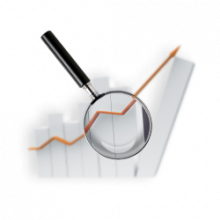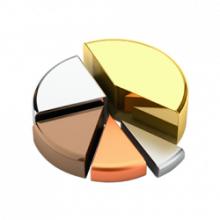Executive summary
Today, two major questions are plaguing the financial community in Morocco. On the one hand, is the current health crisis likely to continue? On the other hand, what would be its macro and micro-economic impacts?
The stakes are high since institutional investors would be prone to readjust their asset allocation strategies, depending on their visibility regarding these two questions. In order to better grasp the topic, our reflection revolves around the following three aspects :
- Health: are we at the end of the tunnel?
- Macro-economy: is there a “consensus” regarding the expected deceleration of Moroccan economic growth?
- Micro-economy: what visibility as of today on major trends in listed sectors?
On the basis of the first elements of response, it is interesting to wonder afterwards about the attitude to adopt within the current context. After a correction of more than 25% of the stock market in 2020, would it be interesting to look beyond the pandemic ? Hence, if the investor wants to take more risk, what would be the most appropriate approach ?
At the end of our reflection, we emerge with four major convictions :
- In the absence of an effective Covid-19 vaccine or treatment over a short-term horizon, the primary governments’ goal remains to flatten their infection curve. Only at that point that we can assume a possible plan to “exit lockdown”. As far as Morocco is concerned, it seems difficult to us to consider a normal return of economic activity without Europe giving out positive signals. Considered as important economic partners, France and Spain infection curves’ con-figuration would be two to three weeks ahead of that of Morocco ;
- In a context where the world is moving towards longer than expected lockdown periods and taking into account the very evolving governments’ recovery plans, any scenario of economic growth could seem arbitrary at this moment. However, it is important to highlight that the re-markable wave of solidarity noticed in Morocco, combined with the significant budgetary leeway available to executives would partially absorb the expected economic fluctuations. In a context marked by a lack of visibility, the Moroccan GDP forecasts published by local and international institutions are very disparate, within a range from -3,7% to 2,3%. This confirms the absence of consensus in the economic community ;
- To this date, based on the available data as well as our discussions with the Management of listed companies, we can identify for some sectors a growth path during and post the pandemic crisis. For others, such as the financial sector, the exercise would be very subjective. The reason is the lack of visibility of the economic, monetary and regulatory package that will be put in place by the government and the central bank in favor of the financial sector. The latter plays a crucial role in supporting the Moroccan economy during this unprecedented crisis ;
The unprecedented nature of the current health crisis should certainly have major impacts both on government priorities and the business model of several sectors. Nevertheless, we believe it is more interesting for investors to project themselves post-crisis to bet on winning sectors. Our strategic reading of the successive events so far highlights four themes :
- Telecoms will benefit from a new growth dynamic for two reasons. On the one hand, the strong increase in Data Mobile by around 50% during the lockdown period, would promote the change of consumption habits in Morocco. Concretely, average consumption per user should reach a new threshold and the Data penetration rate should accelerate its increase. On the other hand, private and public players will evolve towards models that rely more on digitalization which would boost the development of the high and very high-speed Internet segments. With that in mind, it is reassuring to note that the investment effort already deployed by the sector allows it today to support this significant increase in traffic without showing any visible deterioration in its service quality;
- Agribusiness should gain, at the end of this health crisis, strategic significance for 3 reasons. First, this activity shows no disruption in its value chain thanks to the solid performance of its Supply and Demand components. Second, this sector is a major provider of employment which could play a greater role during this crisis. Third, new export opportunities will emerge in a context where the food security issue seems to take over within large economies. To this end, we are particularly interested in Cosumar and Lesieur Cristal which are already part of an international development approach supported by world-class business shareholders and reliable local institutional;
- Modern Retail has a great opportunity to raise its penetration rate within the economy. This rate settles at only 17% against 38% on average for comparable markets. This sector reached rec-ord levels in terms of attendance, thus promoting a change in household consumption habits. At the same time, we highlight the implementation of digitalization through the launch of online ordering and home delivery services. A new promising niche which we believe, it will ultimately create value for shareholders;
- Precious metals will stand out during this health crisis for three reasons. First, the massive activation of money printing following Central Banks’ extremely loose monetary policies will depreciate the value of money for the benefit of Gold as a safe-haven investment. For instance, the Fed made successive cuts to bring its key rate into a range close to zero and just announced a historic quantitative easing program of around $ 700 Bn. Second, rising concerns about states’ solvency at the end of this crisis are reflected through widening interest rate spreads. Third, pressure on the precious metals mining supply following the shutdown of unprofitable polymetallic mines. Considered among the world Top-5 Silver mine, SMI remains an attractive investment. This stock offers both a significant catch-up effect of Silver price and a hedge against a possible dirham depreciation since its revenue is totally dollar-denominated.




